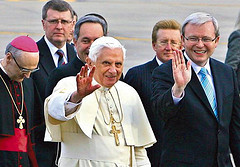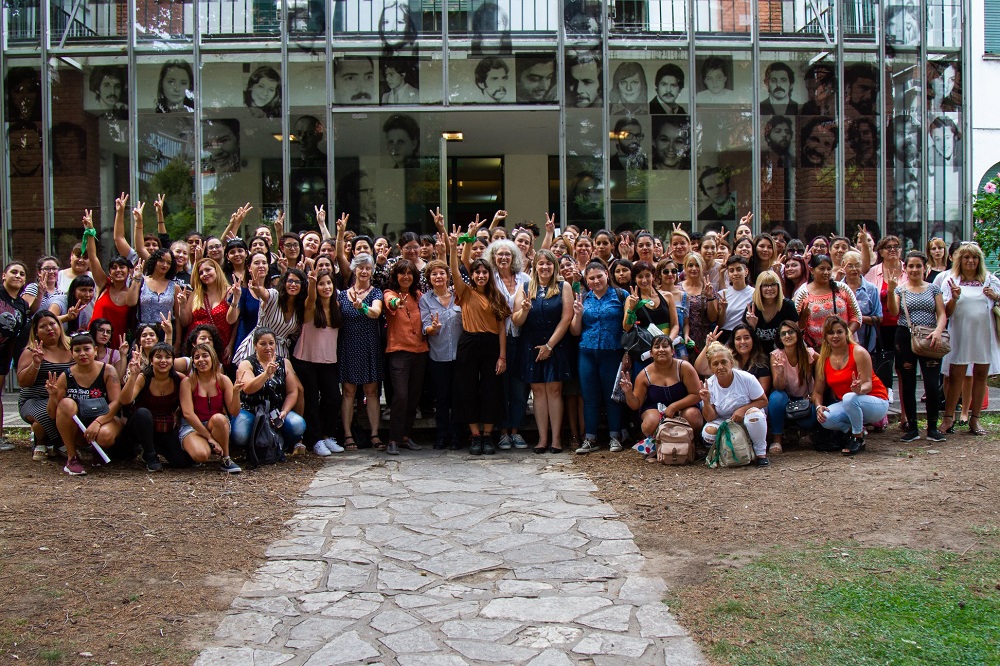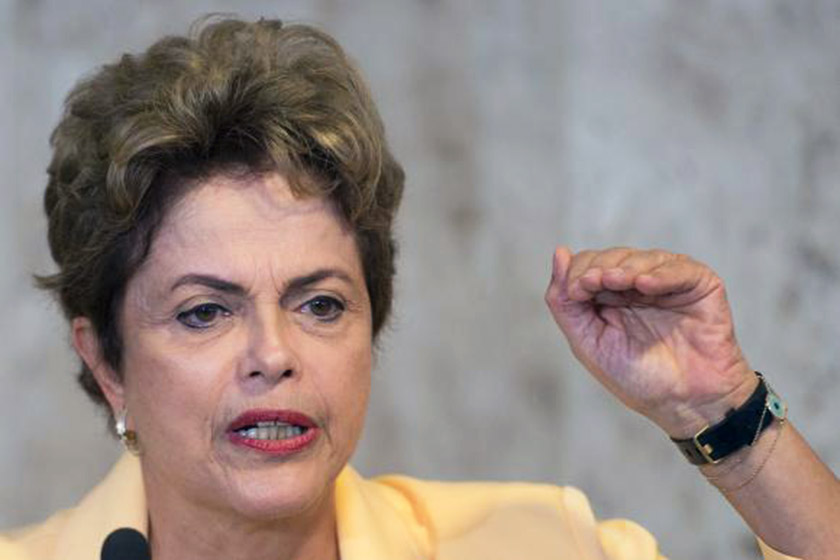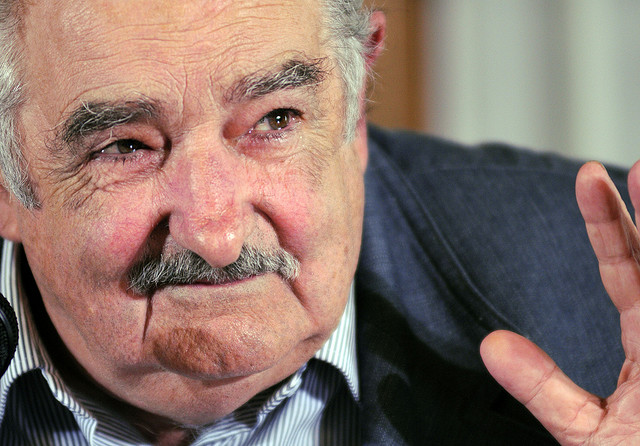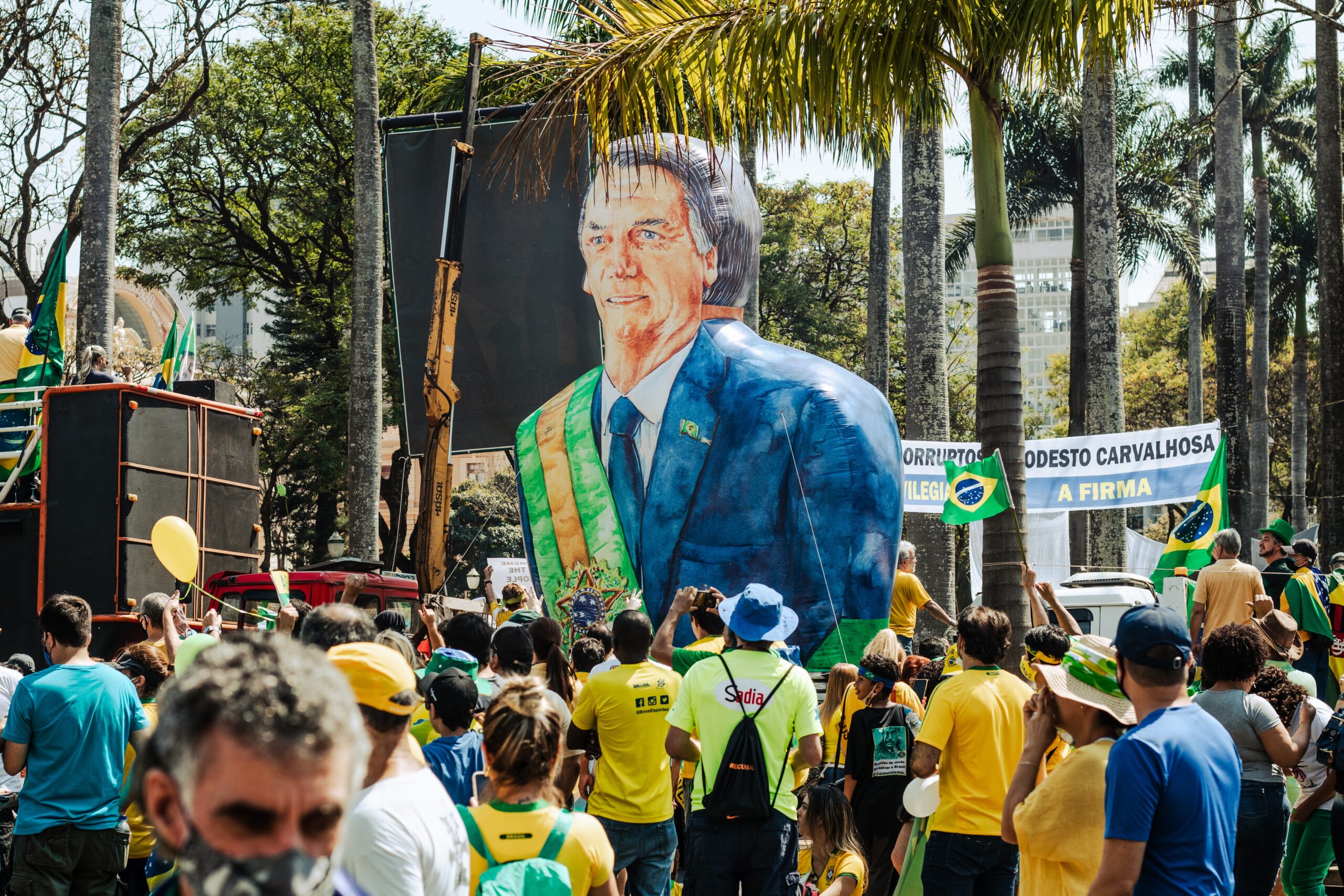
Brazil, Features, Southern Cone
Instagram Account “Contragolpe Brasil” Identifies Jan. 8 Rioters
January 14, 2023 By Amanda Magnani
Mere hours after the start of the Jan. 8 riot at Three Powers Plaza, where the Brazilian government’s executive, legislative and judicial powers sit, Instagram account Contragolpe Brasil started posting photos of alleged participants and asking the public for help to identify them.
In one of the account’s more popular posts, with 141,000 likes, Alessandra Faria Rondon is seen banging on the desks of the Brazilian Congress. She yells, “My name is Alessandra Faria Rondon! We want military intervention! Military intervention now!” Then, she turns the phone on the faces of others who also entered the congressional floor.
In the post caption, Contraglope said, “Do you have any information about this person who invaded the National Congress?” followed by the email of the Minister of Justice and Public Security. Thanks to the video and Contraglope’s efforts, Alessandra has since been arrested and imprisoned in the Women’s Penitentiary of the Federal District in Brasília.
Rondon is only one of many who used social media to document the Jan. 8 attack in Brasília — not to mention the extensive organizing that happened over social media to coordinate the attack in the first place. Now, their strategy may be backfiring.

Contragolpe Brasil: Going viral, plus a road bump
It took Contragolpe Brasil less than two days to reach 1.1 million followers. With a name that means both “Against the coup” and “Counterblow”, the page has 189 posts exposing some of the thousands of people in green and yellow, the colors of the Brazilian flag — and over the past four years, of Bolsonaro supporters — who turned their cameras on selfie mode and showed their faces all over social media as they vandalized Brasília.
The page emerged a day earlier than the official channel created by the Ministry of Justice and Public Security, which in five days has received over 70,000 emails with denunciations.
“People understood the urgency of mapping those involved as quickly as possible and identifying their roles in the hierarchy of orchestrating the riot”, said Carlos d’Andrea, Social Communication professor at the Federal University of Minas Gerais. “They understood the severity of the institutional risks.”
The posts show the faces of people who took part in what Brazilian media has been calling a terrorist act. Posts are made either from screenshots of the images and videos published by rioters themselves on social networks, or from those received privately via direct messages. Where names and cities of residence are not revealed, followers are asked for help in identifying the people in the photo.
Since Jan. 8, Contragolpe Brasil has received national and international coverage, and dozens of Instagram accounts with similar names have been created.
Yet, it didn’t take long for Instagram to suspend Contragolpe Brasil’s possibility of creating new posts. After about 24 hours, however, the page was already back on track.
In a screenshot shared on the page’s stories on Jan. 11, the official message from the platform affirmed that there were no violations of the platform guidelines.

A screenshot of a story by Contragolpe Brasil. The text reads, “You have not posted anything that is affecting your account status.”
The reigning theory is that the social network’s policy, which identifies atypical flows of posts as spam, automatically blocked the page from posting.
A powerful collaborative and decentralized movement
A fixed post portrays Salomão Vieira de Jesus, alleged sponsor of the riots, and a collage of four receipts with values as high as 4,000 reais (784.90 USD). Up until a few days ago, the face of Ana Priscila Azevedo, identified as “one of the main organizers of the invasion of the National Congress on January 8, 2023”, figured right next to him. But after being arrested on Tuesday, Jan. 10, her photo received an updated caption and went back to the bottom of the grid.
In a comment with over 4,500 likes, Contragolpe Brazil writes: “ARRESTED! Congratulations to everyone who helped identify/report this person!”
D’Andrea sees Contragolpe Brasil as a powerful collaborative and decentralized movement. He said, “What strikes me is how personal this process is. There are many images circulating very fast, and those who identify and expose each other are acquainted. They recognize coworkers and residents in their city or town. People are available and willing to collaborate with these identifications. There is a surveillance of those who are close.”
As of Wednesday, Jan. 11, the Federal Police had identified roughly 2,000 people and arrested almost 1,200 who, according to an official statement, “will respond, to the extent of their responsibilities, for crimes of terrorism, criminal association, attack against the Democratic State of Law, coup d’état, persecution, incitement to crime, among others.” This number shall increase considerably over the next few days, as images from the security cameras are cross-referenced across Federal Government’s databases.
No official data has been published regarding the number of people who took part in the invasions on Jan. 8. However, images broadcasted on TV show thousands around the buildings at Three Powers Plaza. As BBC Brasil reports, one of the main focuses of investigations to date is the mass identification of those responsible for the invasions, alongside the mapping of the financing network of these groups, and the investigation of the complicity of public agents.
“Exposing the images and videos showing who participated in the riots is an important political tool,” said Fabio Kerche, Political Science professor at the Federal University of Rio de Janeiro. “It is a response from society who, through denunciations, tries to hold accountable those who went too far. Besides, this informal survey can be even more important from a legal point of view, as it can help the criminal process.”
Legal consequences
“What took place on Sunday was a hostile demonstration that ended up infringing a number of articles of the penal code”, said Mariana Zopelar, a criminal lawyer from Brasília.
Supporters of the former president will respond to attacks on democracy, depredation of public property, acts of violence and criminal association, among others, with sentences of up to 8 years in prison. And the images produced by the offenders themselves will be a key in the penal process.
While the Brazilian penal code doesn’t obligate anyone to produce self-incriminating proofs, that is exactly what the Jan. 8 rioters have done.
Zopelar said it is only possible to identify people due to the content they initially published on social media. “It is notorious how much of the information collected comes from Bolsonarista networks,” she said.
On the day that followed the invasion, the Minister of the Federal Supreme Court, Alexandre de Moraes, ordered social media platforms to take action against anti-democratic content and help identify the rioters. He also ordered Facebook, TikTok and Twitter to block 17 accounts and profiles that encouraged the attack.
A spokesperson for Meta told BBC Brasil that the company would immediately delete posts urging people to take up arms or forcibly invade Congress. It has classified these posts as infringing platform guidelines, meaning that content that supports or praises the attack will be removed.
“Exhibitionism and vanity are key characteristics of the Brazilian alt-right movement. People show their faces to engage and be recognized by their peers”, said d’Andrea.
Unlike what happens with left-wing activists and marginalized groups, here there is no shame or concern about hiding and protecting their identity. More than a certainty of impunity, d’Andrea explains, these people do not believe their actions to be punishable. On the contrary, they believe themselves to be bearers of truth and righteousness.
For d’Andrea, Contragolpe Brasil’s counterblow is a clever one. “People exposed themselves, their image, vindicating for themselves the role of protagonists of a historical moment.” Now, these very same images are being used to identify and punish them.
Effectively, the rioters have created a great deal of self-incriminating content. But during the criminal process, using that as actual admissible proof can be more complicated than it seems. “What much of the selfies and videos show is people wearing yellow and green and taking part in the demonstration, which is not a crime per se”, said Zopelar.
As each person may only respond criminally to the extent of their responsibilities, the analysis of the proof will be a complex one, which does not take away the relevance of the collective work of identifying the perpetrators.
People running Contragolpe Brasil have not answered to an interview request with LAND at the moment. So far, they have remained anonymous, which might be explained by a concern for their own safety, as Bolsonaristas can be violent trolls.
But it might also be a strategy to avoid responding to criminal offenses.
Exposing and identifying the participants of the invasion may not in itself constitute a crime. But accusing them of criminal activity might. “When you impute a crime to someone who turns out to not be guilty, you could be indicted for slander. The Brazilian penal code is very protective of everything that hurts honor,” said Zopelar.
“What few people understand is that one is only guilty when the process no longer accepts any appeals. Throughout the process, the accused is not at fault — so that person cannot be effectively accused of being guilty,” she adds.
That might explain the change in Contragolpe Brasil’s bio. When the profile was first created, it identified itself as a “Profile for the identification of criminals who attack democracy in Brazil!”
Since then, the word “criminal” has vanished. Now, it is a “Collaborative profile for the identification of people who attack democracy in Brazil.”
About Amanda Magnani
Amanda Magnani is a Brazilian journalist and photographer, currently based in Minas Gerais, Brazil. Her work is mostly focused on migration, socioenvironmental issues and climate justice. She is a Pulitzer Center Rainforest grantee and OptOut News Climate Editor. She is also a master in Journalism, Media and Globalisation, with a diploma from Aarhus University, the Danish School of Media and Journalism, and Charles University, and a specialist in Public Policies and Gender Justice from the Latin American Council of Social Sciences.
